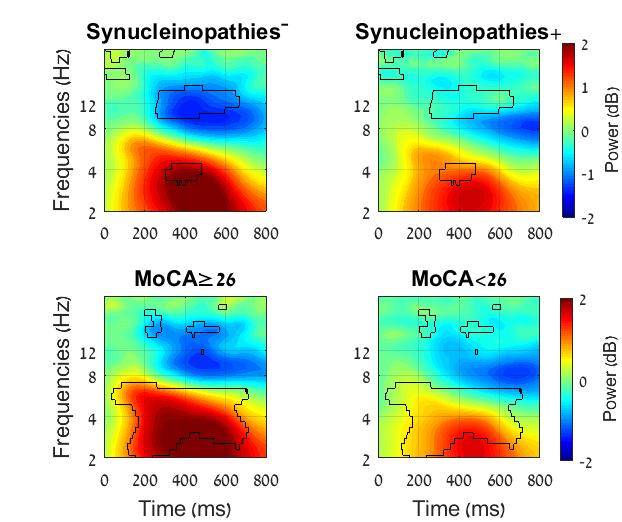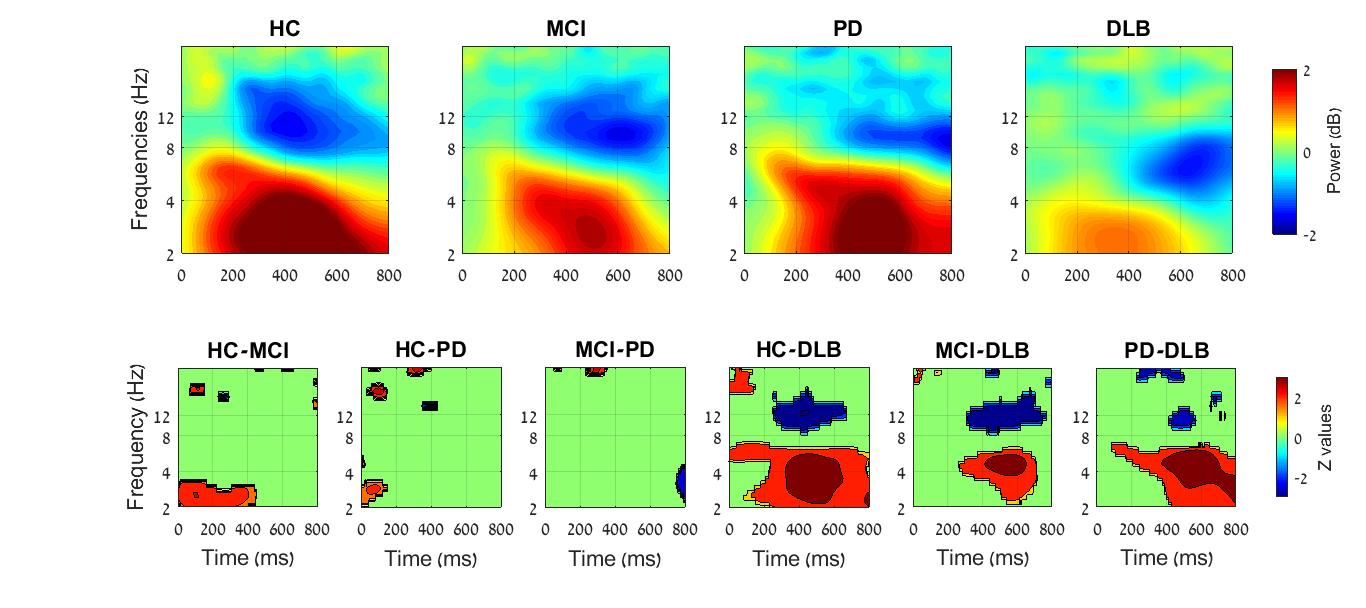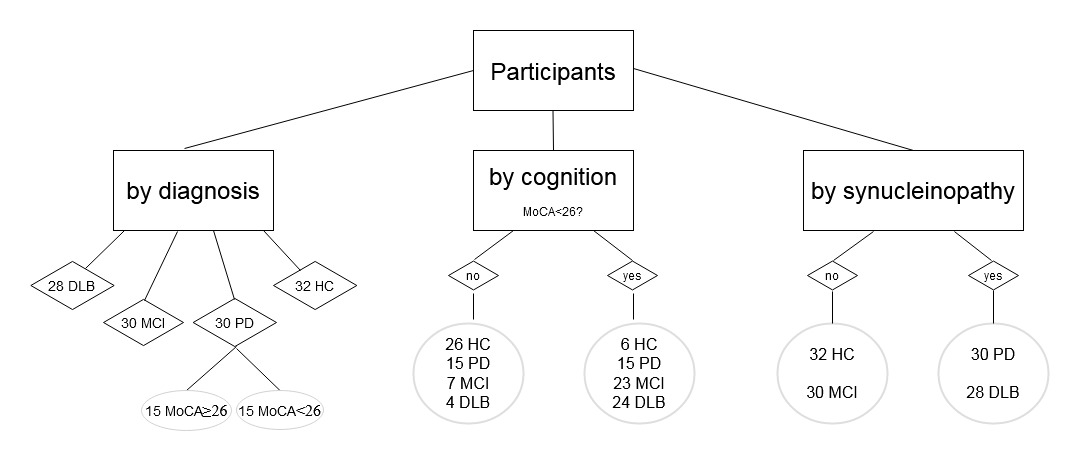Category: Neurophysiology (Non-PD)
Objective: To assess the specificity of an EEG signature of the visual event-related oscillations (ERO) in synucleinopathies.
Background: Parkinson’s disease (PD), PD dementia (PDD) and dementia with Lewy bodies (DLB) are forms of synucleinopathies. These clinical syndromes share pathological and clinical similarities, while differ in the timing and severity of motor and cognitive impairments. EEG studies report on abnormal neural oscillations in synucleinopathies, however, a specific EEG-based differentiating marker reflecting pathological course has not been established.
Method: EEG from Pz was recorded during a visual oddball task in 30 PD patients (age: 70.9±5.6, ♂: 73%, disease duration: 3.5±2.8), 28 DLB patients (age: 71.3±6.1, ♂: 86%, disease duration: 3.9±2.2), 30 patients with mild cognitive impairment (MCI, age: 73.9±4.8, ♂: 50%) and 32 healthy controls (HC, age: 71.6±6.5, ♂: 34%). Cognitive function was evaluated using the Montreal Cognitive Assessment (MoCA), while motor symptoms were assessed with the motor MDS-UPDRS. ERO were analyzed using EEG power in the time-frequency domain calculated from the result of complex Morlet wavelet convolution and compared between groups with synucleinopaty (PD and DLB) and controls (MCI and HC) as well as between participants with normal and impaired (<26) MoCA scores.
Results: Patients differed from HC in MoCA (MCI: 23.2±3.3, PD: 24.6±2.8, DLB: 19.6±5.3, HC: 27.0±1.7; p<0.001). DLB patients had the most severe motor and cognitive involvement (p<0.001). Overall performance of the PD, MCI and HC during the visual oddball task was comparable, while DLB patients had longer reaction time and reaction time inter-trial variability compared to all other groups (p<0.009). EEG analysis revealed that patients with cognitive impairment due to any cause (e.g., PD, DLB, MCI) showed decreased delta band ERO compared to those with normal cognition (z=-2.4, p=0.009, Cohen’s d=-0.6). Patients with synucleinopathies had increased beta band ERO compared to controls (z=2.4, p=0.007, d=0.6).
Conclusion: Decreased delta band ERO are characteristic to cognitive impairment due to any cause, reflecting a decline in information processing ability, which is not disease-specific. A lack of inhibition in beta band ERO was specific to synucleinopathies, reflecting impaired execution of a motor action triggered by external cues.
To cite this abstract in AMA style:
Y. Rosenblum, T. Shiner, N. Bregman, I. Maidan, F. Fahoum, N. Giladi, A. Mirelman. Can event-related oscillations aid in differentiating Parkinson’s disease and dementia with Lewy bodies? [abstract]. Mov Disord. 2021; 36 (suppl 1). https://www.mdsabstracts.org/abstract/can-event-related-oscillations-aid-in-differentiating-parkinsons-disease-and-dementia-with-lewy-bodies/. Accessed December 15, 2025.« Back to MDS Virtual Congress 2021
MDS Abstracts - https://www.mdsabstracts.org/abstract/can-event-related-oscillations-aid-in-differentiating-parkinsons-disease-and-dementia-with-lewy-bodies/



